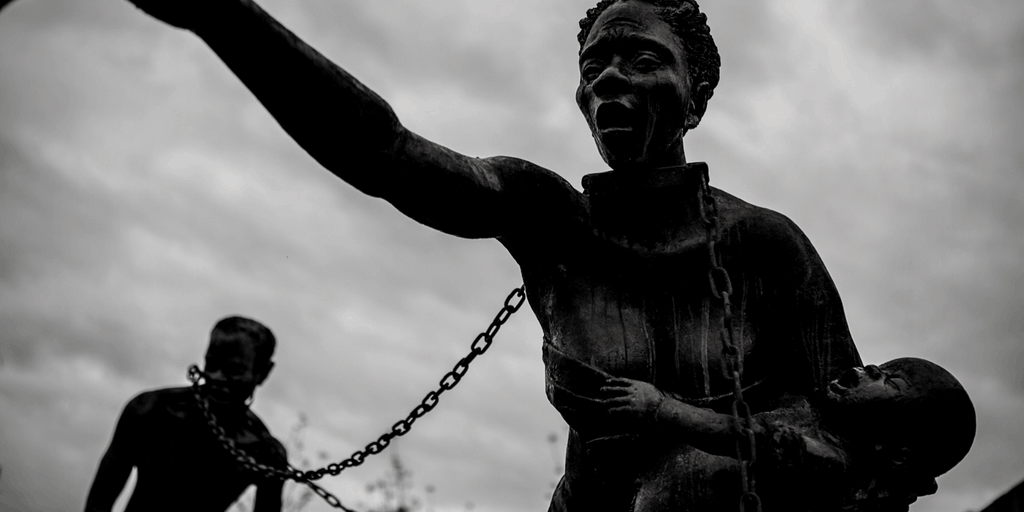On April 26, 2018, the National Memorial for Peace and Justice opened in Montgomery, Ala. The memorial is stunning in its visceral simplicity. It memorializes 4,400 victims of racial violence — men, women and children who were tortured and murdered between 1877 and 1950 because of white fear of black bodies and a desire to impose white control over spatial and racial segregation.
While the memorial is meant to remind us of the brutality and horrors of the past, it also reminds us black lives are still under constant threat.
More space must be made for those who died after 1950.
The memorial does not include Emmett Till, murdered in 1955 because he would not accede to the concept of white superiority. It does not include Michael Donald, beaten and his body hung from a tree in Mobile, Ala., in 1981 by members of the United Klans of America. It does not include James Byrd, Jr., brutally beaten, chained to a pickup truck and dragged along a lonely highway, decapitated, until his headless body was dumped off of Huff Creek Road in Jasper, Texas, in 1988.
Nor does it include Ramon Smith and Jerron Moreland, two 21 year-old black men who were shot multiple times, dismembered and dumped in a pond in Oklahoma City on May 2nd, 2018; or the murder of Shaliyah Toombs, a pregnant 23 year-old mother of two little girls, who texted her mother, “They gonna kill me mom help me” before she was beaten, choked and tossed in the back of a truck.
Same day. Same city.
There has been a brazen resurgence of violent white terror against the black community. White America still believes it can impose white control over the spaces and places blacks and other minorities seek to inhabit. Trayvon Martin was shot on February 26, 2012, while walking back to his home in Sanford, Florida, after purchasing a bag of Skittles and an Arizona Tea. A white neighborhood watchman didn’t think a young black man in a hoodie belonged in the neighborhood.
Philando Castile was stopped by a police officer for a minor traffic violation in Falcon Heights, Minnesota, on July 6, 2016. In a state that allows “concealed carry” of guns, Castile notified the officer that he was armed. The officer then shot and killed Castile. Castile’s fiancé and her 4-year-old child were in the car. There was no outcry from the National Rifle Association.
White place. Wrong type.
Sean Bell, Sandra Bland, Jamar Clark, John Crawford III, Jonathan Ferrell, Oscar Grant, Tamir Rice, Walter Scott … all killed because they were black.
White place. Wrong type.
When black bodies appear in places and spaces not thought to be appropriate, police are quickly called to question: Who are you? What’s your business?
I thank God I am not adding to the list above the names of Rashon Nelson and Donte Robinson, the black real estate agents who were arrested on April 12, 2018, at a Starbucks in Philadelphia for sitting while black; Chikesia Clemons, who asked for plastic utensils at a Waffle House while black. Kells Fyffe-Marshall almost made the list for checking out of an AirBnB rental without waving at the white neighbor while black. Really?
White place. Wrong type.
I am grateful I am not adding to the list Darren Martin, a former White House staff member for “moving-in while Black,” or Yale graduate student Lolade Siyonbola for “napping while black” in her dorm common area.
We cannot forget 17-year-old Lloyd Skanahwati Gray and 19-year-old Thomas Kanewakeron Gray, members of the Mohawk tribe, accosted on a tour of Colorado State University’s campus for not satisfying the interrogation of a nosy white woman.
White place. Wrong type.
I opened Facebook this morning and more stories were all over my feed, so much so that I edited this piece quickly before I had to add another paragraph.
These encounters with law enforcement have real-life consequences for people of color, many of them deadly. An apology is not sufficient. This is not 1877.
Black people are exasperated. I mean, it’s constant. Really there isn’t a conversation to be had right now, but I want white people to know that these tactics, these intimidation tactics, don’t work in the 21st century.
The Civil Right Act of 1866 stated unequivocally that people of color enjoy “full and equal benefit of all laws and proceedings for the security of person and property, as is enjoyed by white citizens.”
History matters and memorials are important. But the National Memorial for Peace and Justice is an unfinished story.
Here’s how it ends: Black Lives Matter and we are here to stay.
We will hold accountable colleges, corporations, public officials, financial institutions, and Wall Street for the bias exhibited both explicitly and implicitly against our communities. We will exercise our voting rights and elect city councils, district attorneys, judges and sheriffs who will protect our lives.
We will no longer allow white America to criminalize our cultural expressions, our presence, our existence. We will not allow you to dictate the when, where or how we live our lives. What we do is not up to you. We are not intimidated.
I look at the world
From awakening eyes in a black face—
And this is what I see:
This fenced-off narrow space
Assigned to me.
I look then at the silly walls
Through dark eyes in a dark face—
And this is what I know:
That all these walls oppression builds
Will have to go!
I look at my own body
With eyes no longer blind–
And I see that my own hands can make
The world that’s in my mind.
Then let us hurry, comrades,
The road to find.
— Langston Hughes
Stella Adams is Chief of Equity and Inclusion at NCRC.
Photo Credit: WikiCommons



